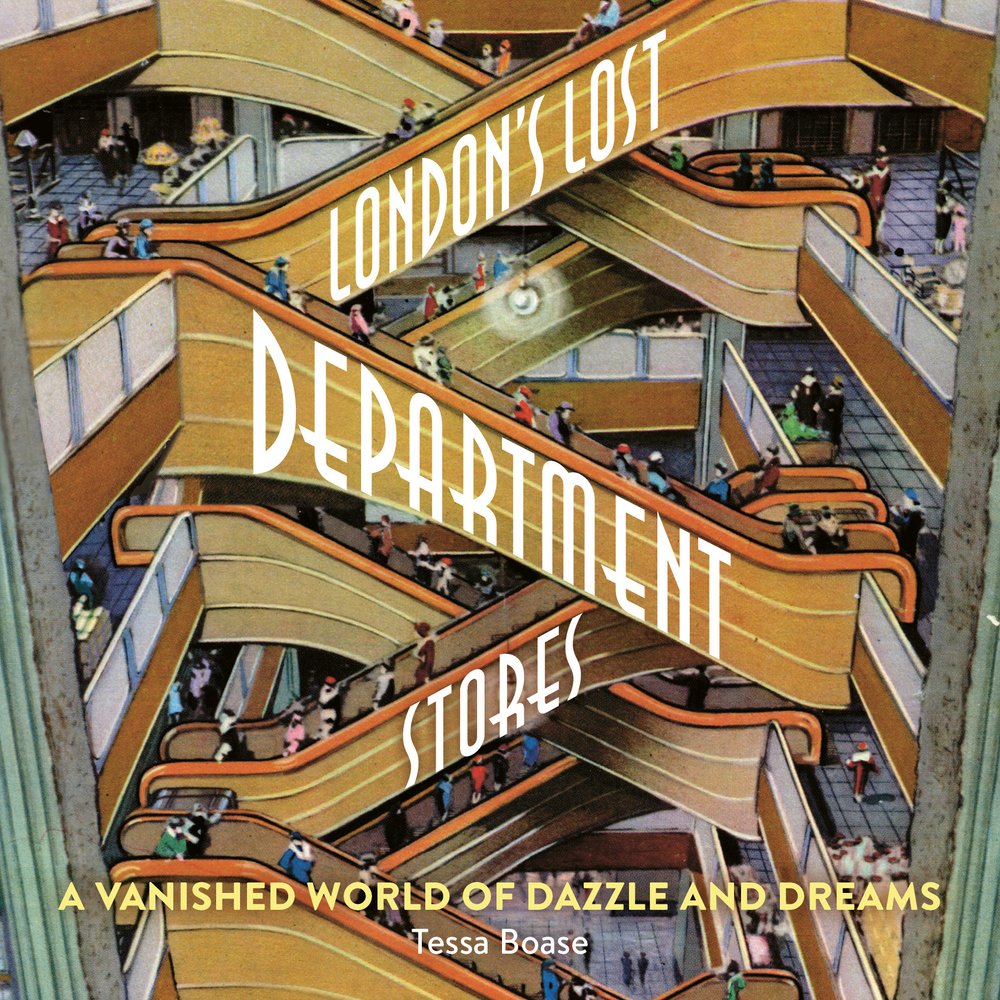Post
BOOK REVIEW | London’s Lost Department Stores: A Vanished World of Dazzle and Dreams
20 Feb 2023
Reviewed by Barry Coidan, Society Hon. Treasurer
By Tessa Boase
I began reviewing this delightful little book once I managed to get it out of my wife’s hands, and after she phoned a friend to extol its virtues.
Tessa Boase lovingly describes the arc of these lost temples of consumerism and indulgence. The soaring ambitions of singular men (invariably) were matched by grand facades, and vaulted ceilings. For many years, the destination of housewives, lords, ladies, and a burgeoning middle class, only to be brought low by changes in fashion, finance, and corporate takeovers.
Some shone so brightly - magnificent displays, orchestras, restaurants, roof tennis courts, even theatre shows - that, on reflection, it wasn’t a surprise they burnt out.
Fire was regular occurrence. The blazing Harrison Gibson store on the High Street Ilford – fated to be burnt to the ground twice, once in 1924 and 1959 - rose phoenix like on both occasions. Then to slowly die as the nearby Stratford Centre, opened in 1974, hollowed out its customer base.
These magnificent edifices anchored many suburban High Streets – a trip there was not just to shop, but to imagine, admire and salivate. The irony was that the upstart shopping malls, that did so much to kill off these Leviathans, simply took all that these department stores offered, and atomised that. So, often, the stores’ demise led to the High Street’s own decline.
Management might be paternalistic or unbelievable severe. “In 1891 some half a million shop assistants “lived in”” in cramped conditions, with money deducted from wages for essentials like hot water for a once-a-week bath, or fines for “untidiness”. Other stores treated their staff more humanely providing bright, clean accommodation off site, along with recreational facilities e.g., Bourne & Hollingsworth provided a staff swimming pool.
Initially, in the 1860s the staff was predominately male. Changes in attitude and the cheapness of female workers compared to their male counterparts saw women take over the shop floor. Tessa Boase, introduces us to women, like Margaret Bondfield, who having started at 14 as a shop assistant in Hove, in 1929 became the first female Cabinet member.
There is so much to droll and shed a tear over. Many beautiful stores razed to the ground giving way to nonentries in concrete and steel. What Hitler couldn’t flatten, unimaginative corporate deal makers did.
I was delighted by the names of these vanished Parthenons. Bodgers of Ilford, Quin &Axtens of Brixton Road, Pratts of Streatham. No nonsense names – “I’m off to Bodgers” and you meant it!
Eighty-three percent of department stores have closed since 2016. Ms Boase cites a mix of reasons for this decline and demise. I have my own theory – lack of imagination. Now people are talking about the High Steet needing to be a destination – well these department stores were!
I’ll end on two positives. You’ll learn about Irene Stephens who moved effortlessly up John Lewis’s career ladder to become a director and a member of the partnership’s Central Council. Now the partnership is headed by Dame Sharon White. A woman of ability and imagination leading this bastion of the middle classes into an uncertain future.
This gem of a book is small – you can carry it with you while visiting the lost halls of consumption, guided by two maps. You’ll also find links to a wealth of further reading.
Just like these cornucopias of the near past, Ms Boase takes you into a magical world overflowing with milk and honey.
